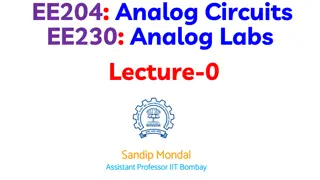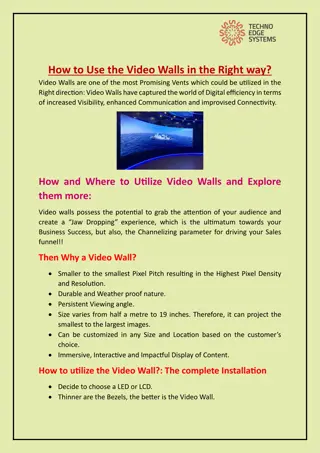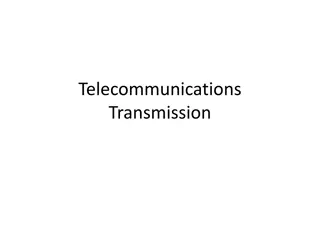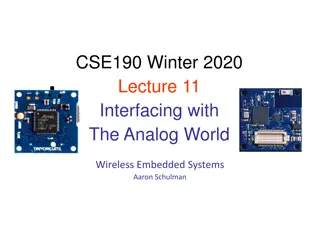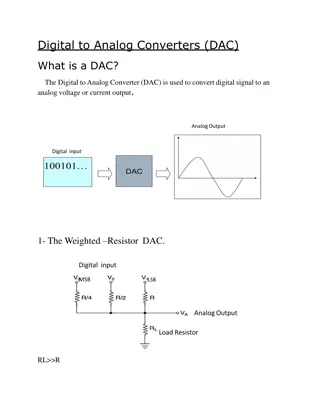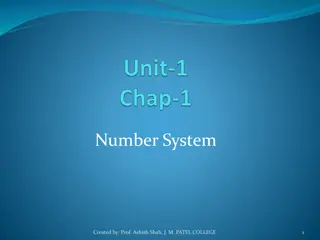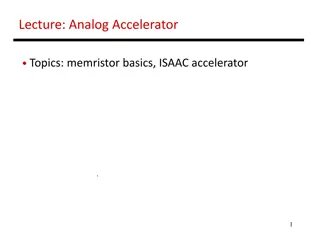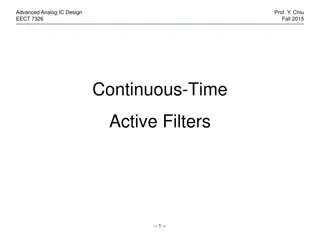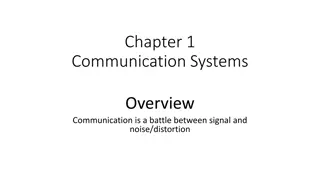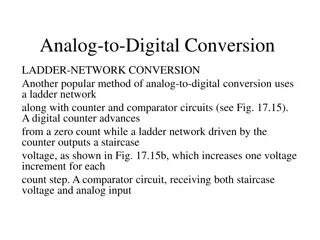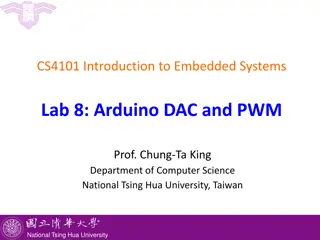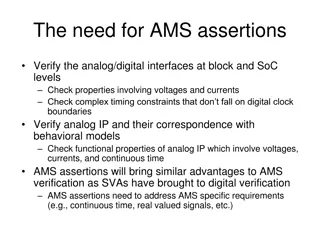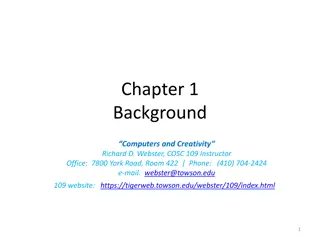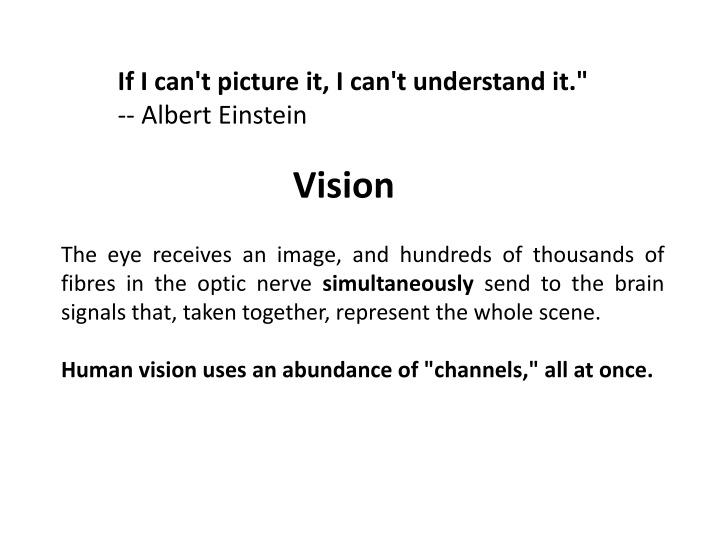
Vision in Television and Human Perception
Explore the fascinating comparison between human vision and television processing, showcasing how the eye interprets images simultaneously while television scans and assembles pictures sequentially. Discover the intriguing concept of persistence of vision and the scanning process in black and white television.
Download Presentation

Please find below an Image/Link to download the presentation.
The content on the website is provided AS IS for your information and personal use only. It may not be sold, licensed, or shared on other websites without obtaining consent from the author. If you encounter any issues during the download, it is possible that the publisher has removed the file from their server.
You are allowed to download the files provided on this website for personal or commercial use, subject to the condition that they are used lawfully. All files are the property of their respective owners.
The content on the website is provided AS IS for your information and personal use only. It may not be sold, licensed, or shared on other websites without obtaining consent from the author.
E N D
Presentation Transcript
If I can't picture it, I can't understand it." -- Albert Einstein Vision The eye receives an image, and hundreds of thousands of fibres in the optic nerve simultaneously send to the brain signals that, taken together, represent the whole scene. Human vision uses an abundance of "channels," all at once.
Vision In television the entire scene must be sent through a single channel. Think of it as a serial process, sent down a series circuit. Within the camera an electrical signal is formed to represent the changing brightness and colour of each part. This signal is sent to the monitor. At the monitor the signal is transformed back into light, and the image is assembled on the viewing screen in its proper relative position.
Vision In the television system, the picture we want to see is "scanned" sequentially, top to bottom, left to right. This repetition occurs at a rate of approximately 30 times every second, so we say that television runs at a rate of 30 frames per second. Even though the picture elements are laid down on the screen one after the other, they all must be perceived at once. This requirement is met by persistence of vision - a property of the eye.
Vision When light entering the eye is shut off, the impression of light persists for about a tenth of a second. If all the picture elements in the image are presented successively to the eye in a tenth of a second or less, the whole area of the screen appears illuminated, although in fact only one spot of light is present at any instant. Activity in the scene is represented, as in motion pictures, by a series of still pictures, each differing slightly from those preceding and following it.
Black and White Television Scanning The process of breaking down the scene into picture elements and reassembling them on the screen is known as scanning. It's like your eye's motion when you read this page. In scanning, the scene is broken into a series of horizontal lines.
Black and White Television At The Camera The camera "reads" the topmost line from left to right, producing a series of electrical signals that corresponds to the lights and shadows along that line. It then passes back to the left end of the next line below and follows it in the same way. In this fashion the camera reads the whole area of the scene, line by line, until the bottom of the picture is reached. Then the camera scans the next image, repeating the process continuously. The television camera has now produced a rapid sequence of electrical impulses; they correspond to the order of picture elements scanned in every line of every image.
Black and White Television The principle of scanning (note how each line breaks down the scene into discrete elements of picture intensity) A voltage created as the camera scans across one line of the Parthenon shot
Black and White Television At The Monitor At the television monitor this signal is recovered and controls the picture tube. The picture tube creates an image that is composed of horizontal lines just like those produced in the camera. As the camera examines the topmost line, a spot of light produced by the picture tube moves across the screen and produces the topmost line of light on the screen. The video signal causes the spot of light to become brighter or darker as it moves, and so the picture elements scanned by the camera are reproduced line by line at the monitor, until the whole area of the screen is covered, completing the image. Then the process is repeated.
Black and White Television At The Monitor At the television monitor this signal is recovered and controls the picture tube. The picture tube creates an image that is composed of horizontal lines just like those produced in the camera. As the camera examines the topmost line, a spot of light produced by the picture tube moves across the screen and produces the topmost line of light on the screen. The video signal causes the spot of light to become brighter or darker as it moves, and so the picture elements scanned by the camera are reproduced line by line at the monitor, until the whole area of the screen is covered, completing the image. Then the process is repeated.
Black and White Television Interlace
Black and White Television Because the phosphor coating on the picture tube can only keep the picture information for a certain amount of time, flicker results if scanning from top to bottom only occurs at 30 frames per second. To avoid flicker, each still picture is presented twice by a process known as interlaced scanning. After the topmost line is scanned, space for another line is left immediately below it, and the next scanned line appears just below the empty space. As the scanning proceeds, alternate lines are scanned, with empty spaces between them. This represents the first showing of the still picture. The next image also consists of spaced lines, and its lines fall precisely in the empty spaces of the preceding image, so the whole screen is filled by the two sets of interlaced scanning lines. These two sets of scanning lines are called fields. There are two fields to each frame of television scanning.
Black and White Television The Sawtooth Wave Consider for a moment the actual trace of the electron beam in either a camera or a picture tube. It goes evenly from left to right, then snaps back quickly to the left. The process repeats itself over and over. To make the beam do this, we apply a scanning voltage to coils of wire around the neck of the tube that act as electromagnets moving the beam around.
Black and White Television The scanning voltage is called a sawtooth and looks like, well, the teeth of a saw - a smooth gradual ramp in voltage, followed by a sudden return to the start of the ramp again. The electron beam moves from left to right across the screen, and then rapidly back, following the wave shape of the scanning voltage. The vertical scanning in the television system is done similarly, as the beam moves 60 times a second from the top of the screen to the bottom. We have to control these sawtooth waveforms in some way

